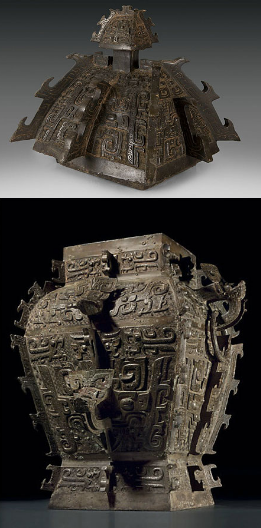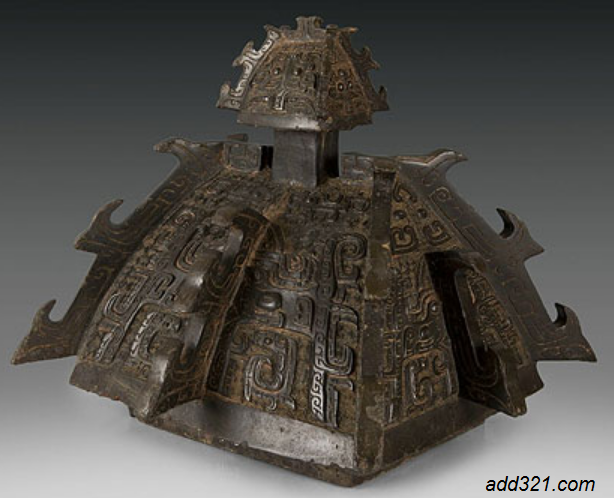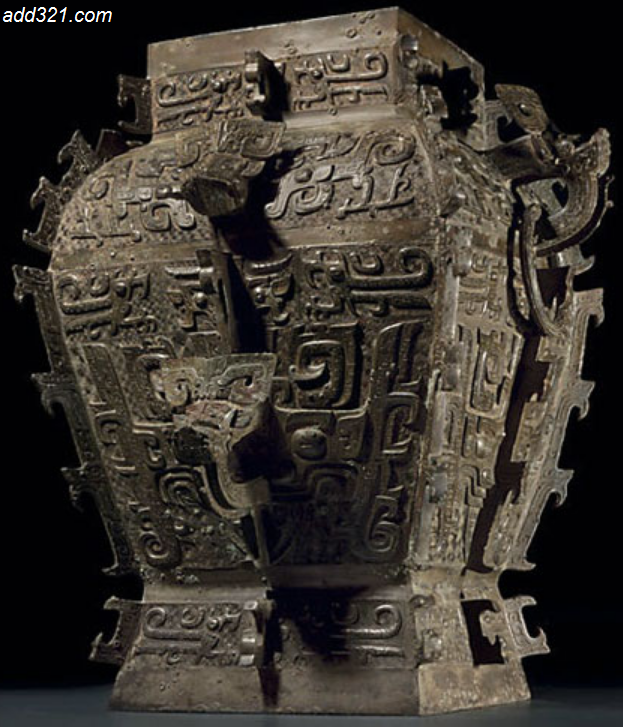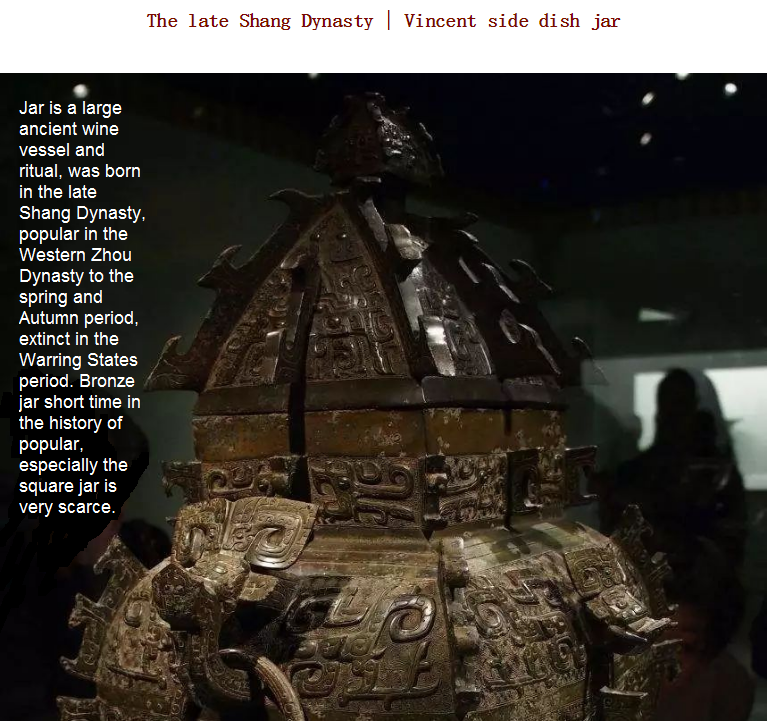

 |


商
1919年湖南省桃源县出土
器盖高28.9cm
器身高63.6cm
湖南省博物馆馆藏
器盖铸有“皿而全作父己尊彝”八字铭文,呈庑殿顶形;器身则铸有“皿作父己尊彝”六字铭文。皿身全器以云雷纹为地,上饰兽面纹、夔龙纹、凤鸟纹。肩部两侧装饰双耳衔环,正面腹部下方置一兽首。四面边角及各面中心共装饰八条突起的长条钩戟形扉棱。整器集立雕、浮雕、线雕于一身,其造型、装饰风格来源于商代宫殿和宗庙建筑。
其器型硕大,雄浑庄重,雕刻精美是中国晚商青铜器鼎盛时期的代表之作,充分反映了我国青铜器铸造鼎盛时期的高超技艺和摄人心魄的气势,被誉为“外形与内涵”兼具的“神品”,是中华灿烂文明和湖湘文化源远流长的绝佳见证。
![]()
Min fanglei
Hunan Museum

The Min fanglei is dated to the late Shang dynasty or early Western Zhou dynasty (12th - 11th century BC). It is a fanglei, or square or rectangular lei, a type of ancient Chinese ritual bronze vessel. The Min fanglei is 88 cm (35 in) tall, and its mouth measures 26.1 cm x 21.6 cm (10.3 in x 8.5 in). Without the lid, it is 64 cm (25 inches) tall and weighs 42 kg (92.5 pounds). It is finely decorated on each of its four sides, with pairs of dragons cast on its shoulders and a horned dragon mask on its handle. Because of its size and workmanship, it is called the "King of Fanglei".
The fanglei is named for the bronze inscription inside its body, which reads "Min zuo Fu Ji zun yi" (Chinese: 皿作父己尊彝), or "Min made [this] esteemed vessel for Father Ji". On the inside of its lid, the inscription has two extra characters: "Min Er [or Tian] Quan zuo Fu Ji zun yi" (皿而[or 天]全作父己尊彝), or "Min Er [or Tian] Quan made [this] esteemed vessel for Father Ji".








